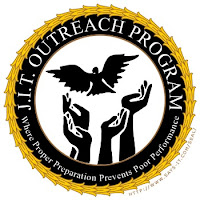There are at least 2,225 child offenders serving life without parole sentences in U.S. prisons for crimes committed before they were age 18. Kids who commit serious crimes shouldn't go scot-free, but if they are too young to vote or buy cigarettes, they are too young to spend the rest of their lives behind bars.
While many of the child offenders are now adults, 16 percent were between 13 and 15 years old at the time they committed their crimes. An estimated 59 percent were sentenced to life without parole for their first-ever criminal conviction. Forty-two states currently have laws allowing children to receive life without parole sentences. In 1990, 2,234 children were convicted of murder and 2.9 percent sentenced to life without parole. By 2000, the conviction rate had dropped by nearly 55 percent (1,006), yet the percentage of children receiving life without parole sentences rose by 216 percent (to nine percent).
“Untie the hands of state and federal judges and prosecutors,” said Dr. William F. Schulz, Executive Director of Amnesty International USA (AIUSA). “Give them options other than turning the courts into assembly lines that mass produce mandatory life without parole sentences for children, that ignore their enormous potential for change and rob them of all hopes for redemption.”
In 26 states, the sentence of life without parole is mandatory for anyone who is found guilty of committing first-degree murder, regardless of age. According to the report, 93 percent of youth offenders serving life without parole were convicted of murder. But Human Rights Watch and Amnesty International found that an estimated 26 percent were convicted of “felony murder,” which holds that anyone involved in the commission of a serious crime during which someone is killed is also guilty of murder, even if he or she did not personally or directly cause the death.
For example, 15-year-old Peter A. was sentenced to life without parole for felony murder. Peter had joined two acquaintances of his older brother to commit a robbery. He was waiting outside in a van when one of the acquaintances botched the robbery and murdered two victims. Peter said, “Although I was present at the scene, I never shot or killed anyone.” Nevertheless, Peter was held accountable for the double murder because it was established during the trial that he had stolen the van used to drive to the victims’ house.
Widespread and unfounded fears of adolescent “super-predators”—violent teenagers with long criminal histories who prey on society—prompted states to increasingly try children as adults. Ten states set no minimum age for sentencing children to life without parole, and there are at least six children currently serving the sentence who were age 13 when they committed their crimes. Once convicted, these children are sent to adult prisons and must live among adult gangs, sexual predators and in harsh conditions.
There is no correlation between the use of the life without parole sentence and youth crime rates. There is no evidence it deters youth crime or is otherwise helpful in reducing juvenile crime rates. For example, Georgia rarely sentences children to life without parole but it has youth crime rates lower than Missouri, which imposes the sentence on child offenders far more frequently.
Public safety can be protected without subjecting youth to the harshest prison sentence possible. Nationwide, black youth receive life without parole sentences at a rate estimated to be ten times greater than that of white youth (6.6 versus 0.6). In some states the ratio is far greater: in California, black youth are 22.5 times more likely to receive a life without parole sentence than white youth. In Pennsylvania, Hispanic youth are ten times more likely to receive the sentence than whites (13.2 versus 1.3).
The United States is one of only a few countries in the world that permit children to be sentenced to life without parole. The Convention on the Rights of the Child, ratified by every country in the world except the United States and Somalia, forbids this practice, and at least 132 countries have rejected the sentence altogether. Thirteen other countries have laws permitting the child life without parole sentence, but, outside of the United States, there are only about 12 young offenders currently serving life sentences with no possibility of parole.
Human Rights Watch and Amnesty International also challenged the presumption that the youth offenders are irredeemable, which is implicit in the sentence they have received. Children who commit serious crimes still have the ability to change their lives for the better. It is now time for us to take positive steps by enacting policies that seek to redeem children, instead of throwing them in prison for the rest of their lives. The J.I.T Outreach Program is calling on the United States to end the practice of sentencing child offenders to life without parole. For those already serving life sentences, immediate efforts should be made to grant them access to parole procedures.

